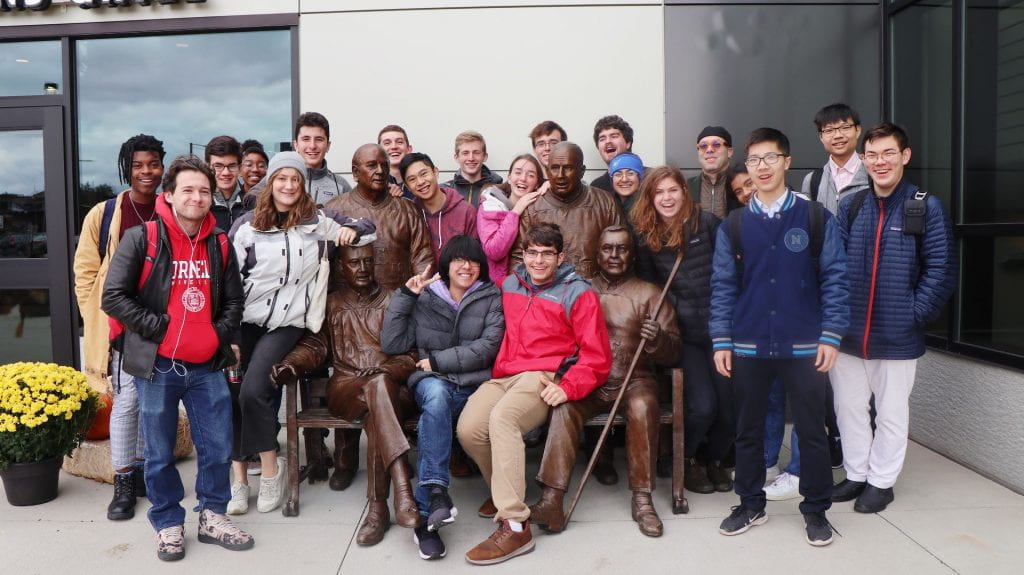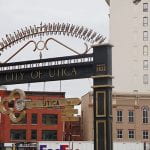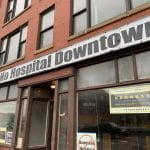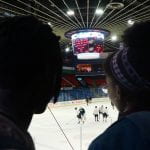
by Gianni Valenti B.S. URS ’22
Before making the three-hour trek from Ithaca to Utica, NY, I had many assumptions about what this trip could possibly have in store; the City of Utica simultaneously surpassed and dispelled all I had believed. Planned and hosted by the Organization of Urban and Regional Studies student group (OURS), the journey itself was one well worth the time and energy because, as a sophomore, I was not only able to further bond with my cohort, but also to get to know the new freshman class and enjoy their company as we dissected the urban fabric of this unique place.
The first stop on our excursion was the Community Foundation, a non-profit organization that provides funds for social investment and urban development. There we had the chance to take a look at a masterplan for downtown Utica that the Foundation funded. This plan detailed the unique issues of planning in a rust-belt city and how Utica is trying to rebrand its urban core. I was not only surprised with the ambition of the plan, but also intrigued by the ways in which the Community Foundation wants to advertise the future of the city. The crown jewel of Utica is The Aud, a mixed-use auditorium that not only stands as a symbol of civic pride, but is also somewhat of a beacon of hope for the city’s future. This contrasts with a great tension in the city – the hospital. During our meeting with the Community Foundation, we got a glimpse at the conversation surrounding the new hospital complex planned for downtown.
Traveling between destinations, we drove through various different zones of the city, getting a taste for the new, old, and in-between parts of Utica. Reaching downtown, we finally saw the site for the new hospital. With all the original warehouses and industrial buildings still intact, the streets and sidewalks were fenced off chain-link, covered with signs showing renderings of the new hospital. The group came face-to-face with a physical manifestation of the briefing we had received about the hospital controversy when we spotted a row of buildings with a banner reading “NO HOSPITAL DOWNTOWN” strung across their fronts. With this in mind, we continued on to our second stop.
We next visited The Aud, the official name for which is the Adirondack Bank Center at the Utica Memorial Auditorium. The Aud is more than just an entertainment venue – it is the most visited site in the city and contributes to an overwhelming feeling of civic pride. During our visit, we were guided by three personnel from The Aud’s financial and management departments and their enthusiasm for the building spoke volumes about how important this site is to Utica’s decisions in planning. Many of us came away from that visit with our eyes opened to a new form of civic engagement and placemaking surrounding sports and entertainment. I know I usually think of social gathering spaces centering more on parks and public works, but this private enterprise serves the roles of all of these spaces and more in Utica.
Our last visit was to The Center, a refugee resettlement and aid center located in Utica’s downtown. Personally, this was my favorite part of the trip because the topic of refugees and immigration is not only increasingly important in modern planning, but is also something none of my classes have touched on in a modern sense. At The Center, we were able to discuss with organization leaders just how important the refugee community is to Utica’s urban fabric and future development. Resettling between 400 and 600 refugees in the city a year, this organization assists almost all of the total immigrants to Utica. We had an active discussion regarding how to plan for these populations and meet their needs as they move to America, and specifically how Utica accommodates them. While the conversation was inspirational in terms of planning for diverse populations, it was kind of depressing when looking at Utica’s future as the current presidential administration continues to block refugees coming into the country.


